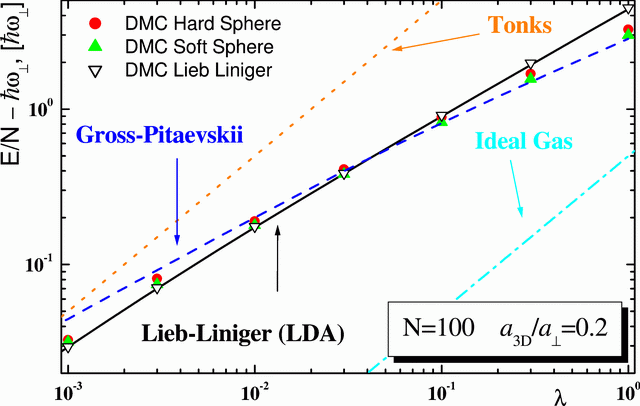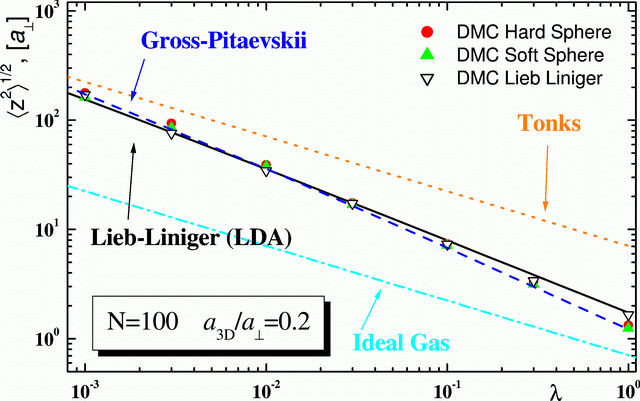Figs. 3.7-3.8 refer to a much larger system with ![]() and
and
![]() . In this case, we see a clear cross-over from 3D mean field, at
large
. In this case, we see a clear cross-over from 3D mean field, at
large ![]() , to 1D LL at small
, to 1D LL at small ![]() . Important beyond mean-field effects
become evident in the energy per particle as
. Important beyond mean-field effects
become evident in the energy per particle as
![]() ,
corresponding to
,
corresponding to
![]() . The Tonks-Girardeau regime would correspond
to even smaller values of
. The Tonks-Girardeau regime would correspond
to even smaller values of ![]() which are difficult to obtain in our simulation.
However, for the smallest values of
which are difficult to obtain in our simulation.
However, for the smallest values of ![]() reported in Fig. 3.7 we
find already very good agreement with the LL equation of state. One should notice
that small deviations from mean field are also visible for
reported in Fig. 3.7 we
find already very good agreement with the LL equation of state. One should notice
that small deviations from mean field are also visible for ![]() , and are
due to high density corrections to the GP equation. The DMC results with the 1D
Hamiltonian (3.8) follow exactly the LDA prediction showing that the
deviations seen in Figs. 3.1-3.2 are due to finite size
effects. In the cross-over region from the mean-field to the 1D LL regime, residual
3D effects are still present (see Fig. 3.9) and produce small deviations
from the LL equation of state.
, and are
due to high density corrections to the GP equation. The DMC results with the 1D
Hamiltonian (3.8) follow exactly the LDA prediction showing that the
deviations seen in Figs. 3.1-3.2 are due to finite size
effects. In the cross-over region from the mean-field to the 1D LL regime, residual
3D effects are still present (see Fig. 3.9) and produce small deviations
from the LL equation of state.

|

|